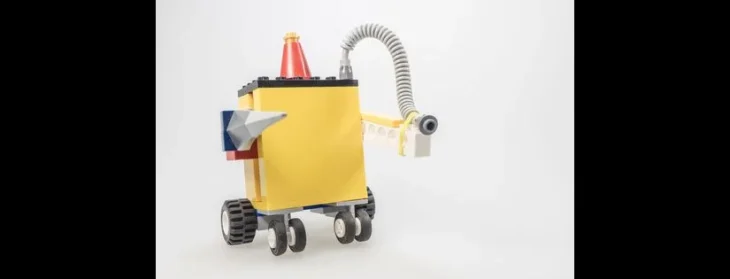Computer vision and Robots
- Home
- Blog Details

- February 24 2024
- admin
Robots, one of technology’s most bizarre and unique gifts to humanity. Popular culture has created vivid depictions of robots. However, real-life begs to differ. Robotics has been in use for a decade. From law enforcement to the medical stream, robotics has witnessed increasing usage. Robotics has also found its position in the industrial automation sector, although sometimes they are not always referred to as robots.
With the continued advancements in technology, the new generation of robots are making their presence felt, and they are specialized in multitasking.
But how would a multitasking robot identify objects? Well, computer vision is doing the job in this regard. Computer vision technology enables robots to see what’s around them, identify, and make decisions.

Computer vision, which is often called as machine vision in robotics, operates via smart cameras mounted on these robots. These intelligent cameras move as per a robot’s movement and capture surrounding visuals. Deep learning techniques aid robots to interpret these visuals, thereby increasing a robot’s learning curve.
The robots have an intricate system embedded within, which identifies and analyzes the captured visuals and create objectives for the next possible step.
Some robots have humanoid features. Sophia, the headline grabbing realistic humanoid robot made by Hanson Robotics, can imitate humans to such an extent that many tabloids called Sophia to be alive. Intriguing and intimidating at the same time.
Nowadays, robots are used in a variety of industries doing vivid tasks. They come in a unique and wide range of sizes and shapes, from task-oriented machines to the more interesting humanoid ones. A robot’s mechanical design may vary from having multiple arms to their modes of navigation. A great example is the spy robots used by intelligence establishments, which are not bigger than a fly. Such a difference in their sizes and shapes depending upon their specific tasks.
Computer vision in Robots
Most of the robots have one aspect as the common factor, which is computer vision. Computer vision-based robots use a variety of smart cameras, such as the LIDAR scanners, RGB cameras, IR cameras, depth cameras, etc.
Computer vision technology is something that processes visuals such as images and video feeds using deep learning algorithms and generates the next course of action. When coupled with smart cameras and sensors, computer vision views captures and recognizes similar patterns in the incoming feeds. Many robots come with inbuilt memory chips, which act as repositories, while others have their backend system plugged into the central server.
It is to note that computer vision has already been present in a wide array of industrial processes, such as pattern recognition, electronic component analysis, object inspection, and recognition. Such an intelligent vision system is also used for barcode recognition, signatures recognition, recognition of optical characters, and currency.
Robot’s Anatomy
The primary setup of a robot’s vision system includes necessary items, like a camera or a camera recorder that captures a picture or records a clip, an inbuilt machine vision system to guide a robot’s mechanism, and the required algorithms to generate a result.

For a machine vision-enabled robotic system to operate smoothly and produce precise results, it is significant to make sure that these essential components interact in a way as required.
Let us take a short walk through the operation of a machine vision system in robots:
- Illumination is the first and foremost necessity when it comes to machine vision. A camera will be able to see clearly and capture shots if the object to be captured adequately illuminated. This helps in focusing on stand-out features
- The camera lens grabs the images and transmits to the smart sensors as light signals.
- The sensor converts the received light signals into digital imagery and transfers it to the processor for recognition and analysis.
- The vision processing algorithms run the images against the repository, identify the information, and give out a decision.
Regarding identifying colors, the robot’s vision system is classified into three prime groups depending on the object’s color:
- Binary image, which is for black and white images
- Gray images
- Other images which consist of red, blue, or green.
The system creates a digital image using pixels divided into the classes mentioned above. In case an image doesn’t conform to these classes, then the class similar to the image is selected
Rise of industrial robots
The rise of industrial robots has acted as a catalyst to boost up production efficiency. Computer vision-based robots are slowly abolishing time-consuming tasks in pre-production checks such as mechanical changes, system calibration, test runs, etc. Although production workers mostly carry out such tasks, robots are indeed making their presence felt.
In case you are looking for a robot, make sure you have the right understanding of a robot’s control program. The machine vision system should be compatible with the control program of the robot. The configuration needs to be smooth without much hiccups and extra time. The motive of introducing machine vision guided robots is to enhance productivity while reducing costs. Even with a consistent system, setting up may require a lot of time and labor. In case a system is asking for extra time and work, reassess the configuration.

A robot is sightless without a proper vision guided system, for it needs the same system to identify and carry out designated tasks. For minimal jobs, there are computer vision-based robots that come with predesignated settings such as pick and place. Tasks such as individual boxing can be automated by computer vision for identifying position and orientation. Nowadays, there are machine vision guided robots where the system identifies positioning parts of the object and position information to the robot, which can carry out “picking” while simultaneously inspecting it, without needing any orientation pallet. Law enforcement establishment in some cities around the world has introduced “patrolling robots,” which work on behalf of the police. There are entire production setups with no employees but only robots carrying out operations. The COVID-19 global pandemic has introduced automated vision-based robots in restaurants.
With the reduction in software and hardware prices coupled with rapid growth in computer vision technology, it is becoming simple to integrate robotics with such vision systems. The computer vision market in robotics is destined for long-term growth. With more and more applications in a wide range of industries, and with the increasing ease of use, it is understandable that this field will grow exponentially in the future.


